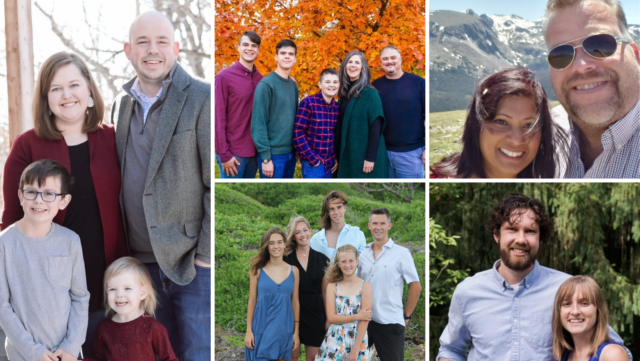Creating a daily habit of prayer can be difficult. It does not come naturally to most of us. What if there was a better way to go about beginning a rhythm of prayer in your life?
Instead of taking big, time-consuming steps, what if we started with little steps like praying for another person for only five minutes a day? What if that simple practice began to multiply, resulting in a cascading movement of prayer that eventually transformed a whole community?
One way to do this is by creating a 30-day prayer calendar. I first heard about this idea in the book Contagious Disciple Making by David and Paul Watson. The prayer calendar is one of the practices they use to start Disciple Making Movements around the world. (Learn more about Disciple Making Movements here.)
As I have used it myself, I’ve experienced powerful results. As I have begun to pray for people in my social network, God has worked miracles and I’ve felt greater compassion for those around me.
How It Works
- Number each line on a piece of paper to correspond with the days of a month.
- Write the name of a person on each numbered line, beginning with those closest to you who would be most likely to answer a phone call or return a text. You can even start with a few people who might join you in disciple-making efforts or might make their own prayer calendars at some time in the future.
- Each day, look at your list or calendar and pray for the person noted for the day. For example, if it is the 12th, then you would call the person on your list that is on line 12. You can say something like, “I have a prayer calendar and I pray for you on the 12th day of every month. This means I am going to be praying for you throughout today. Is there anything specific that I can pray about?” Once they share their requests, ask, “Can I pray for you right now?” The whole exchange should take less than 5 minutes.
- End by asking them, “When God answers your prayer, do you mind letting me know?”
If you cannot reach the person by phone, text them and ask the same question. Once you get a response, you can text them your prayer or send them a voice message.
How It Can Multiply
Invite three or more of the people on your list to start their own prayer calendars. Teach them how to do it and then periodically ask them how it is going. Don’t forget to ask if they have any great stories of how God is working. By sharing stories of what God is doing, we encourage and inspire one another.
If three of the people on your calendar start their own and then they each have three more people who also start calendars, you move from 2.5 hours of prayer to 32.5 hours of prayer taking place each month, and over 300 people being prayed for on a monthly basis. Can you imagine how this could transform a local church?
The discipline of a prayer calendar helps to create connections between people in the body of Christ. As relationships develop and answered prayers surface, a prayer calendar can create more and more momentum.
The prayer calendar is a small habit to start, but it can have a profound impact over time. As people engage in reaching out to others, ordinary miracles will begin to happen. Their hearts will become more and more oriented toward ministry to others. When this happens, you have the beginning of a prayer movement!
How to Run Discovery Groups

About the Author
David is a pastor at the Vineyard Gilbert who has trained and mentored numerous churches, ministries, and individuals in Disciple Making Movements (DMM) in the U.S. and Africa. Contact David at [email protected] to engage more.
The views expressed on this site or in this media are those of the speaker(s), author(s), or contributor(s), and do not necessarily represent the views of Vineyard USA or any of its Regions, Ministries or Initiatives. For more information, see the
Vineyard USA disclaimer here.





